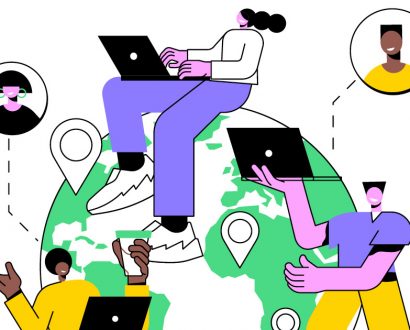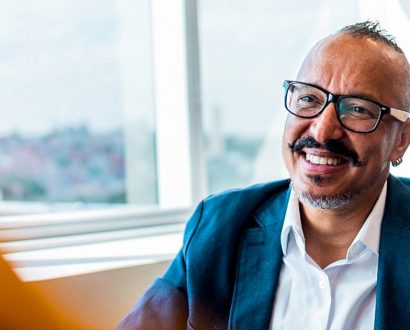For the better part of a century, when Nissan’s CEO visited a workplace, he would answer five scripted questions. It wasn’t communication so much as kabuki (popular Japanese musical theater) with cars.
Current CEO Makoto Uchida does it differently. With the automotive industry facing disruption, he realized that Nissan had to become more agile, self-directed and innovative. And he knew that change had to start with him.
So now, when Uchida visits a factory, he invites questions – and if he doesn’t know the answer, he says so. He has also delegated more authority to the regions and instituted a series of roundtables to spread the message.
Uchida is using the method of ‘leading from the inside out’. That is, he looked within to reinvent himself, overcoming habits and assumptions to adopt a more human-centric approach.

In the end, CEOs still must make the tough calls and to define the mission.
In our discussions with more than 500 CEOs, we found they had a sure touch when it came to the practicalities. But on the human-centric elements of leadership, they were much more insecure.
Leading from the inside out – being aware of who you are, including your shortcomings – can help you to address such questions and make a lasting impact. Equipped with self-knowledge, it is possible to change yourself, and then to take others where you want to go.
Leading from the inside out
A previous generation of business books celebrated the imperial CEO – the guy (and it was always a guy) who came into a troubled company and kicked it into the future. Broken heads were strewn from the factory floor to the C-suite.
The fact is, though, no-one can know how to deal with all the multifaceted challenges business faces. The best CEOs know that control is an illusion.
They accept that their task is instead to find balance among competing imperatives: serving investors, while meeting the needs of other stakeholders; providing structure, while encouraging adaptability; being decisive, while also being willing to change.
Take the United States Navy SEALs. They are part of a hierarchical culture with clear lines of authority. But they are not rigid, as former Special Operations commander Eric Olson notes: “If the map says one thing and the terrain turns out to be different, they follow the terrain, not the map.”
As companies deal with the evolution of generative AI, it is especially important for CEOs to be able to read the terrain. Technological change makes the need for human-centric leadership even more acute.
Machines and algorithms cannot manage emotional and ethical complexity; nor can they foster flexibility and innovation.

Knowing one’s own strengths (and weaknesses) is not an indulgence; it is a strategic necessity.
In the end, CEOs still must make the tough calls and to define the mission. In 2019, for example, Moderna was on a slow and steady course, developing a pipeline of drugs.
When the COVID-19 pandemic hit, CEO Stéphane Bancel essentially bet the company on its ability to create a vaccine. And he got the whole company to embrace the mission – although not without struggle. In less than a year, Moderna had its vaccine.
The imperial CEO who insists ‘my way or the highway’ isn’t going to hear difficult truths, and new ideas will be squelched. Those who are always right won’t nurture a collaborative spirit or build trust. Without trust, speed and resilience are not possible – a recipe for decline in today’s world.
Empathy and insight
CEOs who lead from the inside out, on the other hand, and who systematically cultivate personal growth, are equipped to lead with empathy and insight.
The result is a better, more responsive company, characterized by decentralized decision-making and innovation at all levels. And this has a direct relationship to performance: companies with excellent organizational health deliver three times the total shareholder returns of those in poor health.
In this context, knowing one’s own strengths (and weaknesses) is not an indulgence; it’s a strategic necessity. Only through such introspection can leaders bring out the best in others.
For example, as she rose up at the ranks at Sunoco, where she was CEO from 2008–2012, Lynn Elsenhans realized that some people found her unapproachable. Being a woman in the male-dominated oil industry was a complicating factor.
“I spent a lot of time trying to make those I intimidated feel comfortable about their own abilities,” she recalls. “A big part of my job was to make both men and women more confident by believing in them and believing that they are capable of doing things that they don’t think they’re capable of doing.”
The idea that leaders need to think as much about who they are as what they want to achieve may sound more suitable for a yoga retreat than a boardroom. After all, CEOs are responsible for making the numbers; those who don’t are going to be known, rather quickly, as former CEOs.
As Peter Drucker once put it, a business that isn’t concerned about profits “imperils both the integrity of the resources entrusted in its care, and the economy’s capacity to grow. It is untrue to its trust.”
But Drucker also emphasized the importance of character. And he argued that the best CEOs build healthy relationships.
Our case is that it is impossible to be that kind of CEO without profound self-knowledge. Those who take an ‘inside out’ approach and invest in their own growth are better equipped to lead, and thus to succeed.
Seven proven ways to develop from the inside out
CEOs who want to develop the attributes that translate into human-centric leadership need to commit to the goal. That means embedding behavioral changes into their daily life and then bringing them into play in the workplace. Here are some that work well.
Pause for reflection. Have a routine to expand awareness and focus the mind. This can take the form of meditation, periods of silence or just taking a walk. No phones allowed. At the end of every day, think of five things you are grateful for.
Create feedback. Have an advisory board of people from both your personal and professional lives who will tell you what they’ve observed about your behavior: the good and the not so good. Or after an event or meeting, immediately ask, “What am I missing? What could have been done better?”
Keep learning. Set aside a block of time to study topics outside your areas of expertise; ask people what they are reading or listening to. Don’t just read reports. Engage with those at the front line about what they are seeing. Get input from at least three – but no more than five – trusted advisers when making a big decision.
Find inspiration. Send notes to people, inside or outside work, who have done uplifting things. Dedicate a couple of hours a week to activities that offer fulfillment. Praise people who step up.
Cultivate wellness. Enlist a coach or therapist to check in on your mental health; practice conscious breathing techniques. Schedule short breaks to stretch. Take sleep seriously – at least seven hours a night.
Limit distractions. Put your phone away during meetings. Look at your calendar every week and decide which ones you don’t need to be at. Set explicit boundaries, such as no emails on vacation, and encourage others to follow suit.
This article was co-authored by Dana Maor, Hans-Werner Kaas and Kurt Strovink. Dana Maor is a senior partner at McKinsey & Company and the global Co-Head and European leader of McKinsey’s People & Organizational Performance Practice. Hans-Werner Kaas is Co-Dean of McKinsey’s CEO leadership development program “The Bower Forum” and a senior partner emeritus at McKinsey. Kurt Strovink is a senior partner at McKinsey and leads its CEO special initiative globally. Ramesh Srinivasan, also Co-Dean of The Bower Forum, is a senior partner at McKinsey. They are co-authors of The Journey of Leadership: How CEOs Learn to Lead From the Inside Out.







